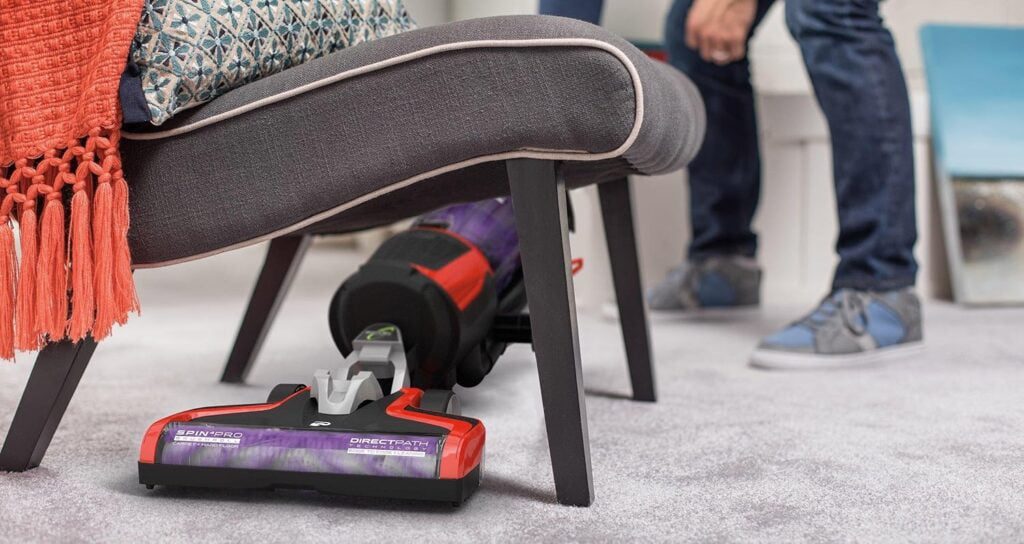Carpeted Floor Care Tips: How to Take Care of Your Carpeted Floor When Using a Vacuum Cleaner

Introduction: The Importance of Proper Carpet Care
Maintaining carpeted floors is crucial for a clean and healthy home environment. Regular care can extend the life of your carpet, keep it looking fresh, and reduce allergens. This guide will walk you through the best practices for vacuuming and maintaining your carpeted floors.
Step 1: Choose the Right Vacuum Cleaner for Carpets
Explanation of the Ideal Vacuum Features for Carpets
The right vacuum for carpets should have strong suction power, an adjustable height setting, and a brush roll that can effectively lift dirt and debris from the carpet fibers.
Recommendations for Vacuum Models Suited for Carpet Cleaning
- Upright Vacuums: Great for deep cleaning, especially in high-traffic areas.
- Canister Vacuums: Versatile and good for reaching under furniture.
- Stick Vacuums: Lightweight and easy to use for quick cleanups.
Step 2: Use the Appropriate Vacuum Attachments
List of Attachments Beneficial for Carpets
- Brush Roll: Essential for agitating carpet fibers to lift dirt.
- Crevice Tool: Ideal for cleaning edges and tight spaces.
- Upholstery Tool: Useful for cleaning furniture and stairs.
How to Use Each Attachment Effectively
- Brush Roll: Use on high and medium pile carpets for a thorough clean.
- Crevice Tool: Run along baseboards and corners where dust accumulates.
- Upholstery Tool: Sweep over furniture and stairs to remove embedded dirt.
Step 3: Set the Correct Vacuum Settings
Importance of Adjusting Vacuum Settings for Different Carpet Types
Different carpet types require different vacuum settings. High pile carpets need a higher setting to avoid damage, while low pile carpets can handle a lower setting.
Instructions on How to Set the Vacuum for Optimal Performance
- High Pile Carpets: Raise the vacuum head to prevent damage.
- Low Pile Carpets: Lower the vacuum head for better suction and cleaning efficiency.
Step 4: Vacuum Regularly and Methodically
Suggested Vacuuming Frequency for High-Traffic and Low-Traffic Areas
- High-Traffic Areas: Vacuum daily or at least 2-3 times a week.
- Low-Traffic Areas: Vacuum once a week.
Techniques for Vacuuming Efficiently and Thoroughly
- Overlap Strokes: Ensure complete coverage by overlapping your vacuum strokes.
- Slow Motion: Move the vacuum slowly to allow it to pick up more dirt.
Step 5: Pre-Treat Stains and High-Traffic Areas
Tips for Pre-Treating Stains Before Vacuuming
Use a carpet stain remover or a mixture of vinegar and water to treat stains before vacuuming. Let it sit for a few minutes before blotting with a clean cloth.
Methods for Addressing High-Traffic Areas with Extra Care
Focus on high-traffic areas by vacuuming them more frequently and using a deep-cleaning mode if available.
Step 6: Protect Your Carpets from Damage
Tips for Preventing Carpet Damage While Vacuuming
- Check for Loose Threads: Remove or trim loose threads to prevent them from being pulled by the vacuum.
- Avoid Harsh Brushes: Use softer brush rolls to prevent fiber damage.
Importance of Checking for Debris That Could Cause Harm
Inspect the carpet for small objects that could damage the vacuum or the carpet.
Step 7: Clean the Vacuum Regularly
Steps for Maintaining Your Vacuum Cleaner
- Empty the Dustbin: After each use to maintain suction power.
- Clean Filters: Regularly to prevent clogs and maintain air quality.
- Check Brush Roll: Remove hair and debris tangled in the brush roll.
Importance of Keeping the Vacuum Clean to Avoid Spreading Dirt
A clean vacuum ensures that dirt and allergens are not redistributed back onto your carpet.
Step 8: Address Spills and Stains Immediately
Techniques for Quick Spill and Stain Removal
Blot spills immediately with a clean cloth. Use a mixture of water and mild detergent for tougher stains.
Products and Methods Safe for Carpet Cleaning
- Baking Soda: For deodorizing and light stain removal.
- White Vinegar: Mixed with water for an effective cleaning solution.
Step 9: Use Area Rugs and Mats in High-Traffic Areas
Benefits of Placing Area Rugs and Mats on Carpeted Floors
Rugs and mats protect high-traffic areas from wear and tear, extending the life of your carpet.
Recommendations for Rug and Mat Placement
Place rugs in entryways, hallways, and other high-traffic zones to catch dirt before it reaches the carpet.
Step 10: Schedule Professional Cleanings
Importance of Professional Carpet Care
Professional cleaning can remove deep-seated dirt and stains that regular vacuuming can’t.
How Often to Schedule Professional Cleanings for Carpets
Consider professional cleaning at least once a year, or more often for high-traffic areas and homes with pets.
Conclusion: Keeping Your Carpets in Top Condition
Recap the key tips for carpet care, from choosing the right vacuum to scheduling professional cleanings. Following these steps will help keep your carpets beautiful and well-maintained for years to come.
Final Encouragement
By incorporating these carpet care tips into your regular cleaning routine, you can enjoy the benefits of clean, fresh carpets and a healthier home environment.
